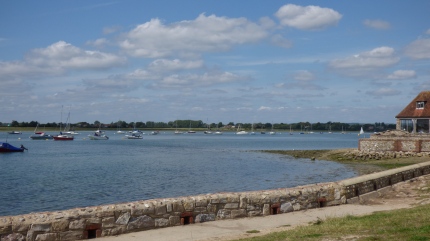Some time ago now, I posted my comic about the story of the Bosham Bells.
I recently had the chance to return to Bosham and revisit the church that features in this story.
The village of Bosham sits on Chichester Harbour.

The earliest parts of Holy Trinity Church date from the Saxon period, though there are many additions of Norman and later medieval date. The church is featured in the Bayeux Tapestry, and a replica of this section, made in memory of a local resident, hangs on the wall.

When I visited the church as child, the feature that most fascinated me was the memorial to King Cnut’s daughter.
Though I also liked going down the short set of steps into the church’s crypt.

This time, I noticed the evidence of graffiti and traces of wall paintings.
As well as the font, which had once been kept covered “to ensure the Holy Water was not stolen for witchcraft”.

I didn’t get to hear the bells in the church, but I went outside to the graveyard, looked up at the bell tower and remembered how, when I was six or seven, I had stood at the edge of the water and strained my ears to hear the great bell calling from the bottom of Bosham Deep.

Dr H



